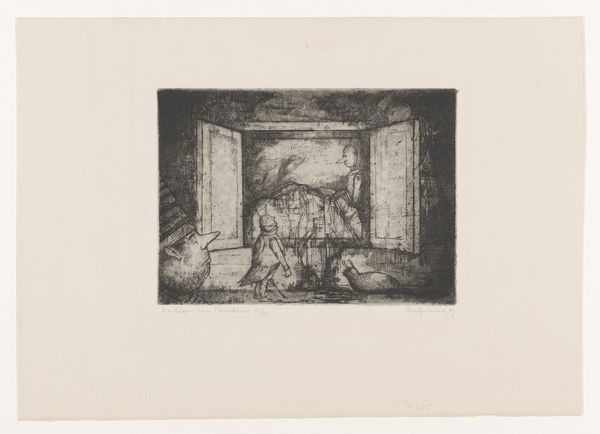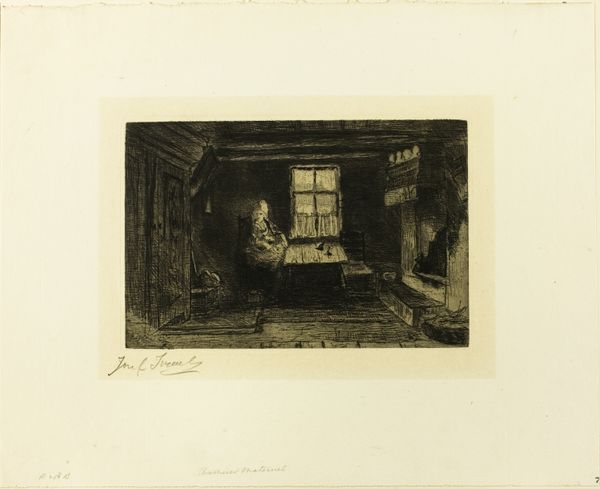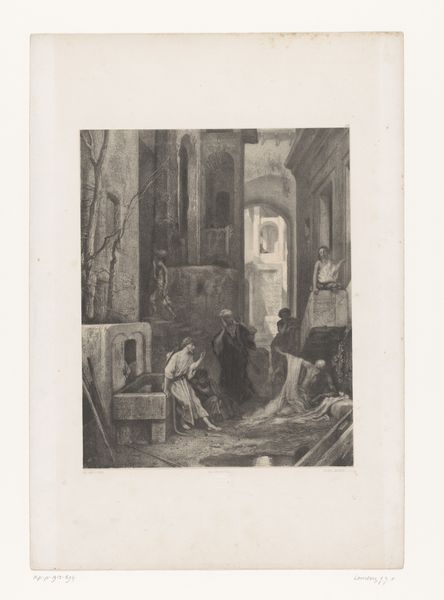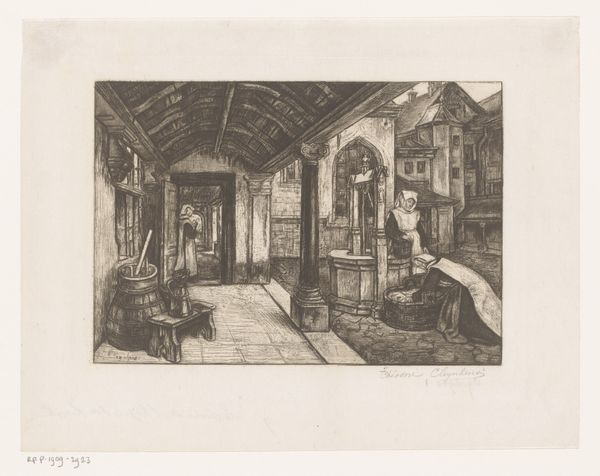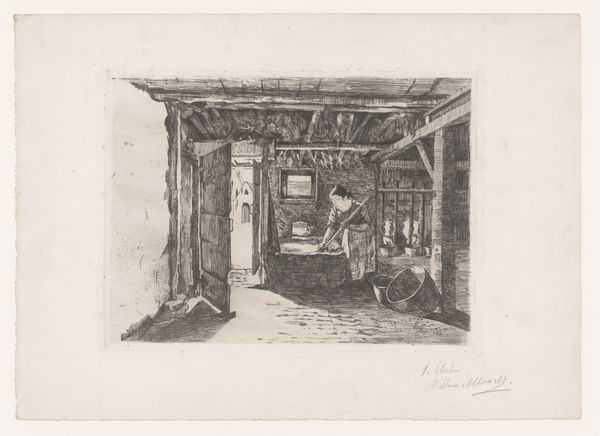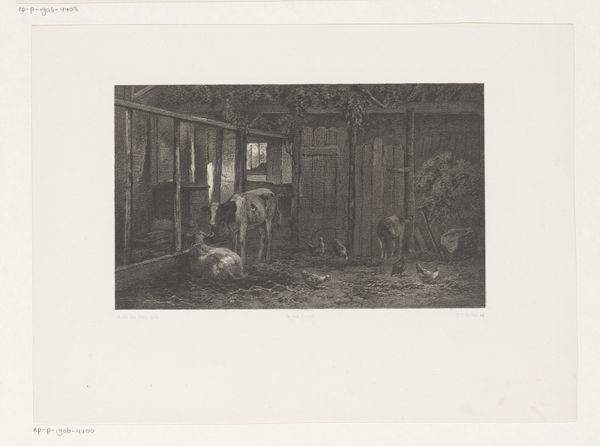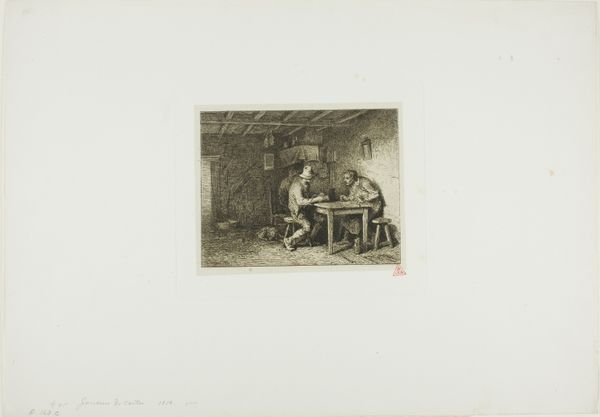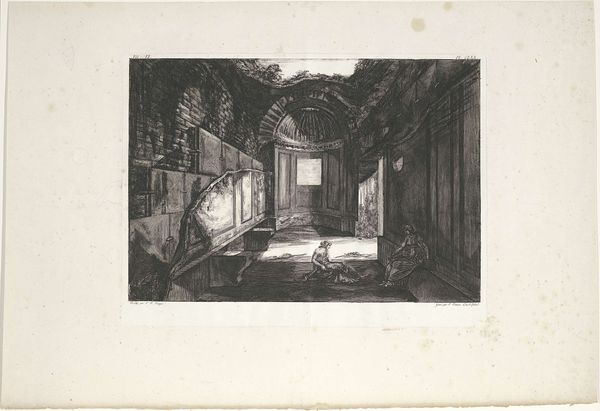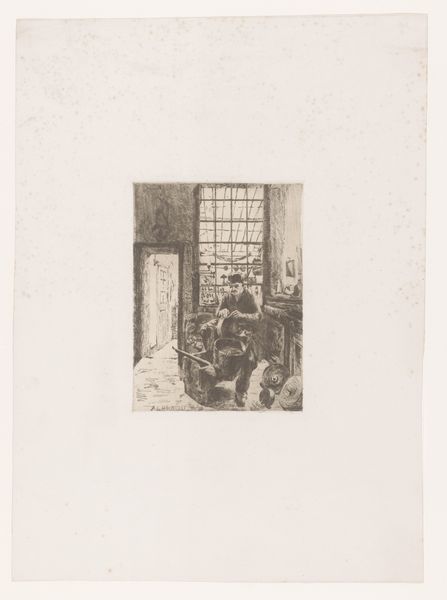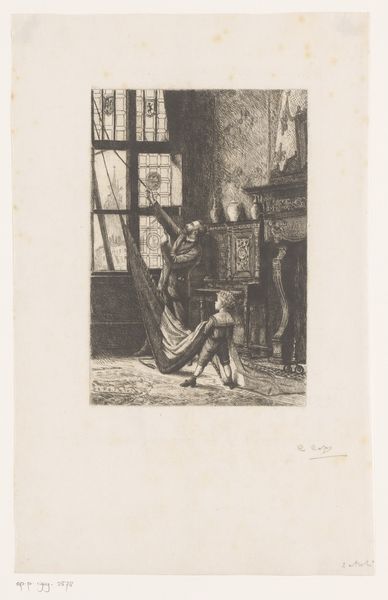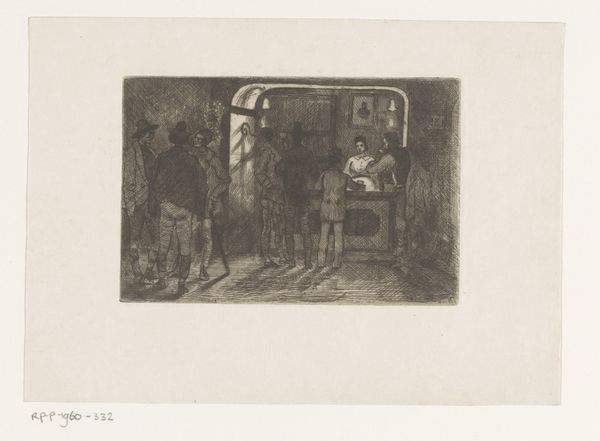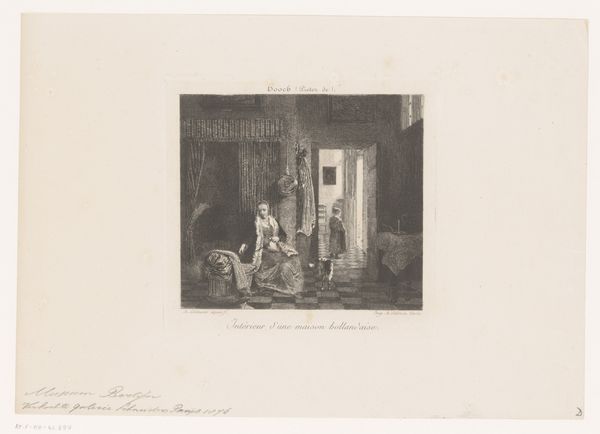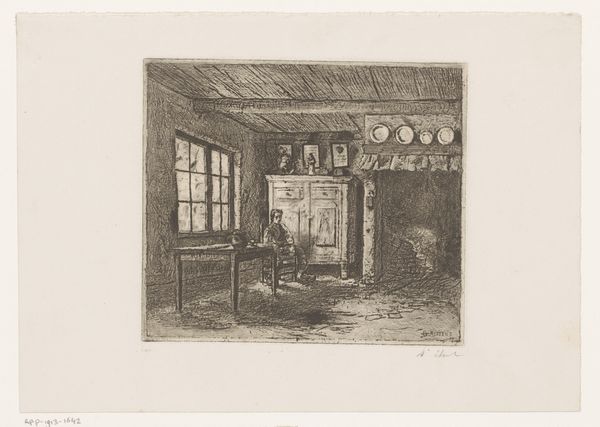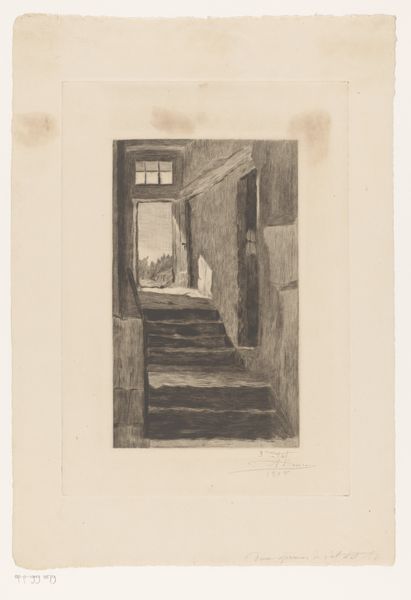
print, engraving, architecture
#
neoclacissism
# print
#
old engraving style
#
landscape
#
ancient-mediterranean
#
line
#
history-painting
#
engraving
#
architecture
Dimensions: height 430 mm, width 575 mm
Copyright: Rijks Museum: Open Domain
Curator: This is Francesco Piranesi's "Trepidarium in Pompeii," an engraving from 1805 currently held here at the Rijksmuseum. What are your initial thoughts? Editor: It feels strangely sterile, considering it's depicting a space presumably designed for leisure and perhaps even…well, intimacy, given the reclining figure. The stark lines and the overall grey palette lend it an almost clinical air. Curator: Interesting. I see that more as a product of the medium and its historical context. Engraving, especially line engraving, prioritizes precision. The rise of Neoclassicism encouraged artists to portray what they perceived as classical restraint. Remember that Piranesi and others produced these prints for a growing market, spurred on by renewed European interest in classical sites due to the recent discoveries at Pompeii. This was mass media, depicting architecture! Editor: Exactly! Think about the distribution and consumption of this imagery. These engravings weren't just about aesthetic appreciation; they fed a growing fascination—and a market, of course—for Roman antiquity, impacting taste and influencing design. Curator: And they played a role in shaping how Pompeii itself was perceived. The archaeological process, and then its subsequent portrayal, heavily impacted public consumption. Looking closely, notice the meticulous detail, the linear patterns and sharp contrasts used to convey architectural elements—consider the labor invested in such detailed replication! Editor: Right, we need to consider the labour here. And consider who would have owned a print like this? Its function, as you noted, extended beyond documentation; it promoted a specific vision of the classical world, carefully curated. The artist made distinct choices to reconstruct what he viewed to be authentic, for a privileged, cultured audience. Curator: So in the end, for you, its historical reception determines its relevance today? Editor: Precisely! By exploring its creation and the economic aspects, social implications, we begin to truly understand its complex, enduring appeal. What’s your read on its continuing impact, then? Curator: By examining the making of art, we understand both material practices and its ability to resonate throughout history and within ourselves.
Comments
No comments
Be the first to comment and join the conversation on the ultimate creative platform.
